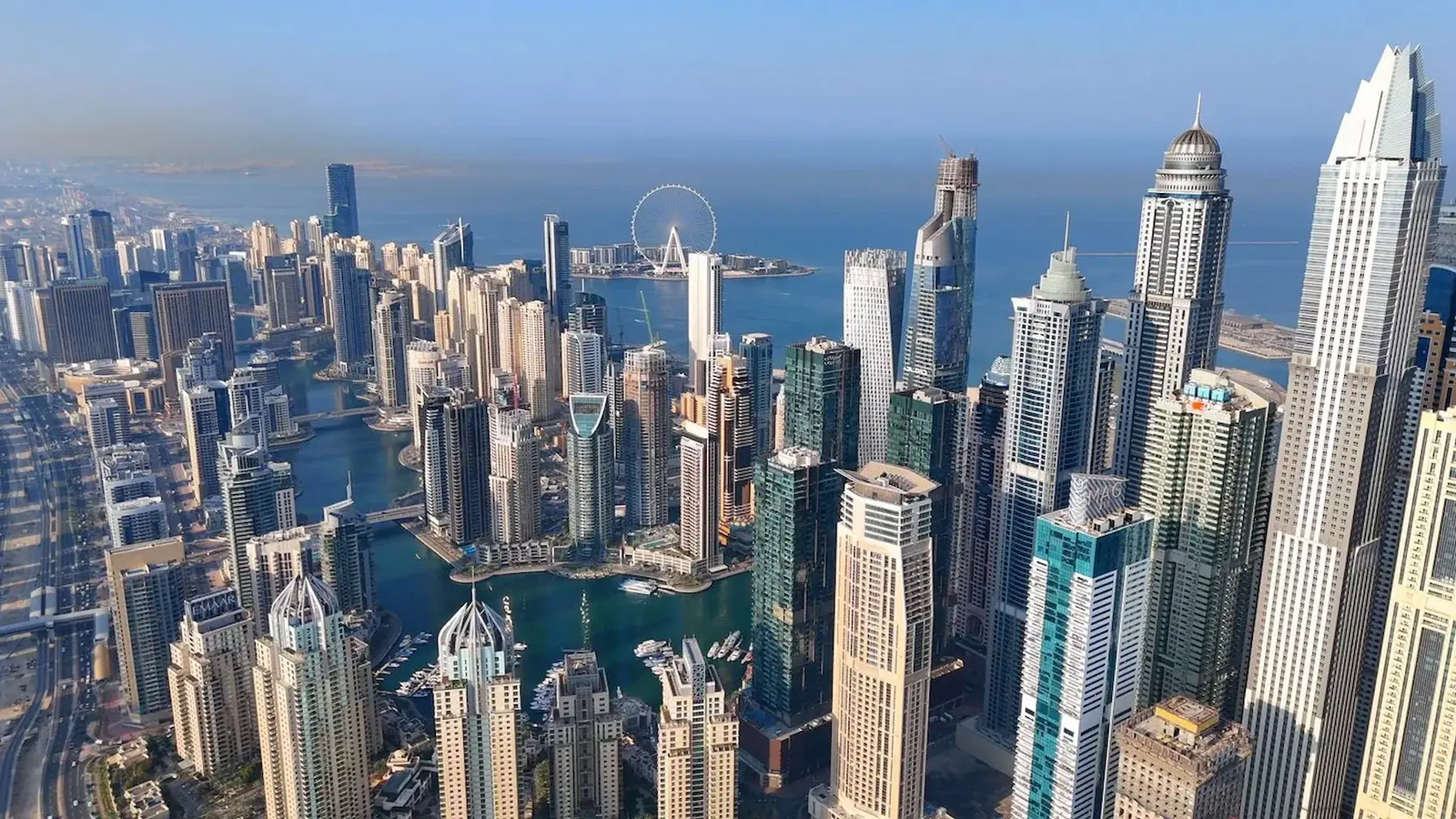Now Reading: 7 Smart Ways to Reduce Property Tax Exposure in 2025
-
01
7 Smart Ways to Reduce Property Tax Exposure in 2025
7 Smart Ways to Reduce Property Tax Exposure in 2025

Table of Contents
Property Tax Exposure – Dubai’s real estate market, valued at AED 761 billion ($207 billion) in 2024 with 170,992 transactions (up 40.3%), is a global investment hub, per X posts. In Q1 2025, 111 sales exceeded AED 10 million ($2.7 million), driven by expatriates and high-net-worth individuals.
Offering 6–11% rental yields in freehold zones like Dubai Marina and no capital gains tax (CGT), Dubai outpaces U.S. markets (4–6%). While the UAE imposes minimal property taxes—5% VAT on commercial properties and 9% Corporate Tax (CT) above AED 375,000 ($102,000)—U.S. investors face IRS obligations on foreign income and assets. This article outlines seven smart strategies to reduce property tax exposure for U.S. investors in Dubai’s 2025 market, with practical steps, without external links.
Understanding Tax Exposure in Dubai Real Estate

Dubai’s tax environment is investor-friendly: no CGT, no personal income tax, and no property tax on residential units. However, commercial properties incur 5% VAT, and businesses with profits above AED 375,000 face 9% CT. U.S. investors must report UAE income and assets to the IRS, risking double taxation without proper planning. Benefits include:
- High ROI: Yields of 6–11% in Palm Jumeirah; 5–8% price growth.
- Golden Visa: AED 2 million ($545,000) investments qualify for 10-year residency.
- Demand: 76,000 new units in 2025 fall short of 5.8 million population needs, per Bayut.
- IRS Credits: Form 1116 offsets UAE CT against U.S. liabilities.
Below are seven strategies to minimize tax exposure in 2025.
7 Smart Ways to Reduce Property Tax Exposure in 2025
1. Invest in Residential Properties to Avoid VAT
Residential properties, including villas and apartments in freehold zones like JVC (7.5–8.5% yields), are exempt from UAE’s 5% VAT, unlike commercial units. A AED 2 million ($545,000) residential purchase saves AED 100,000 in VAT.
- How It Works: Buy homes for personal use or rental; commercial properties (offices, shops) incur VAT on purchase and lease.
- Impact: Saves 5% on acquisition costs; boosts net yields by 0.5–1% in Dubai Marina (6.5–8% yields).
- U.S. Tax Consideration: Report rental income on IRS Form 1040, Schedule E; residential basis reported on Form 8949.
- Action: Target Emaar’s residential off-plan units in Dubai Hills Estate; verify VAT exemption with DLD.
2. Utilize IRS Foreign Tax Credits for UAE Corporate Tax
U.S. investors with UAE rental income above AED 375,000 face 9% CT, but IRS Form 1116 allows credits against U.S. taxes. For a AED 500,000 ($136,000) profit, AED 45,000 ($12,250) CT offsets U.S. liability dollar-for-dollar.
- How It Works: File UAE CT returns with FTA; claim credits on Form 1116, ensuring income is reported on Form 1040.
- Impact: Eliminates double taxation; maximizes returns in Downtown Dubai (6–7.5% yields).
- U.S. Tax Consideration: Credits limited to U.S. tax on foreign income; excess credits carry forward 10 years.
- Action: Hire RERA-registered accountants like KGRN; retain FTA receipts for IRS audits.
3. Structure Ownership Through a U.S. LLC
Holding Dubai properties via a U.S. LLC simplifies IRS reporting and shields personal assets. LLCs are pass-through entities, avoiding double taxation, and are recognized by DLD for freehold ownership in Palm Jumeirah (7–9% yields).
- How It Works: Register an LLC in a U.S. state (e.g., Delaware); transfer property title to LLC. Report income on Form 1040, Schedule E.
- Impact: Reduces personal liability; streamlines tax filings for AED 2 million properties, saving 0.5% in legal costs.
- U.S. Tax Consideration: File Form 8858 for foreign disregarded entities; report assets on Form 8938 ($50,000+).
- Action: Consult U.S. tax advisors; register LLC ownership with DLD for Nakheel’s JVC units.
4. Maximize Deductible Expenses on Rental Properties
IRS Schedule E allows deductions for Dubai rental property expenses: management fees (2–5%), maintenance, RERA fees, and mortgage interest. A AED 1.5 million ($408,000) Business Bay property (6.5–8% yields) with AED 50,000 annual expenses reduces taxable income.
- How It Works: Track expenses like GuestReady fees and DEWA bills; deduct on Schedule E against rental income.
- Impact: Lowers U.S. tax liability by 10–20%; enhances net returns by 1–2%.
- U.S. Tax Consideration: Depreciation (27.5 years for residential) further reduces taxable income; report on Form 4562.
- Action: Engage RERA-registered managers for Emaar’s Dubai Marina units; maintain expense records for IRS.
5. Leverage 1031 Exchanges for Capital Gains Deferral
IRS Section 1031 allows deferring capital gains tax by reinvesting proceeds from a Dubai property sale into another “like-kind” foreign property within 180 days. Selling a AED 2 million JVC apartment for AED 2.5 million defers tax on AED 500,000 gain.
- How It Works: Use a qualified intermediary to hold sale proceeds; identify replacement properties within 45 days.
- Impact: Defers U.S. tax on gains; enables portfolio growth in Dubai Silicon Oasis (8–9.5% yields).
- U.S. Tax Consideration: File Form 8824; gains deferred until final sale, reported on Form 8949.
- Action: Partner with RERA-registered brokers for 1031-eligible DAMAC properties; verify intermediary credentials.
6. Hold Properties for Long-Term Gains

IRS taxes long-term capital gains (assets held over one year) at 0–20%, versus 10–37% for short-term gains. Holding a AED 2 million Downtown Dubai property (6–7.5% yields) for 12+ months before selling reduces U.S. tax exposure.
- How It Works: Retain properties for rental income or appreciation; sell after one year to qualify for lower rates.
- Impact: Saves 10–17% on U.S. taxes for AED 500,000 gains; boosts after-tax returns by 1–2%.
- U.S. Tax Consideration: Report long-term gains on Form 8949; include net investment income tax (3.8% if income exceeds $200,000).
- Action: Invest in Nakheel’s Palm Jumeirah units for long-term hold; track holding period for IRS.
7. Ensure Timely IRS Foreign Asset Reporting
U.S. investors must report Dubai assets over $50,000 on Form 8938 and accounts over $10,000 on FinCEN Form 114, avoiding penalties up to $10,000 per violation. A AED 2 million Business Bay property requires Form 8938 filing.
- How It Works: Disclose property value and UAE bank accounts annually; file electronically with IRS and FinCEN.
- Impact: Prevents fines; ensures compliance for Al Furjan investments (8–9% yields), saving 0.5% in penalties.
- U.S. Tax Consideration: Non-compliance doesn’t affect UAE taxes but triggers IRS audits; file Form 1040 for income.
- Action: Use RERA-registered advisors to value Emaar properties; file Forms 8938 and 114 by IRS deadlines.
Key Considerations for U.S. Investors
- Risks:
- Oversupply: 76,000 units in 2025 may soften non-prime prices by 5–10%, per Fitch.
- Compliance Costs: Tax advisors add 0.5–1% to costs, offset by savings.
- Market Correction: 10% non-prime price drops predicted by 2026, mitigated by 5–8% prime growth.
- Tax Compliance: UAE’s 5% VAT and 9% CT apply to commercial properties. IRS requires Form 1040, Form 1116, Form 8938, Form 8824, Form 8858, and FinCEN Form 114.
- Regulatory Compliance: RERA mandates KYC; AML fines up to AED 500,000. Verify DLD registrations.
- Currency Stability: AED pegged at 1 USD = 3.67 minimizes exchange risk.
Conclusion
U.S. investors can reduce tax exposure in Dubai’s 2025 real estate market by investing in VAT-exempt residential properties, claiming IRS foreign tax credits, using LLCs, maximizing deductions, leveraging 1031 exchanges, holding properties long-term, and ensuring IRS asset reporting. These strategies, applied in high-yield zones like Dubai Marina, Palm Jumeirah, and JVC, optimize 6–11% returns while leveraging no UAE CGT and Golden Visa benefits. Partnering with RERA-registered developers (Emaar, Nakheel, DAMAC) and tax advisors ensures compliance, cementing Dubai’s $207 billion market as a top investment destination. watch here
read more: 8 Inspiring Wellness-Focused Projects Enhancing Liveability





















